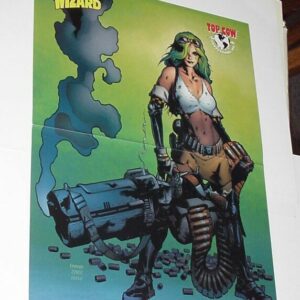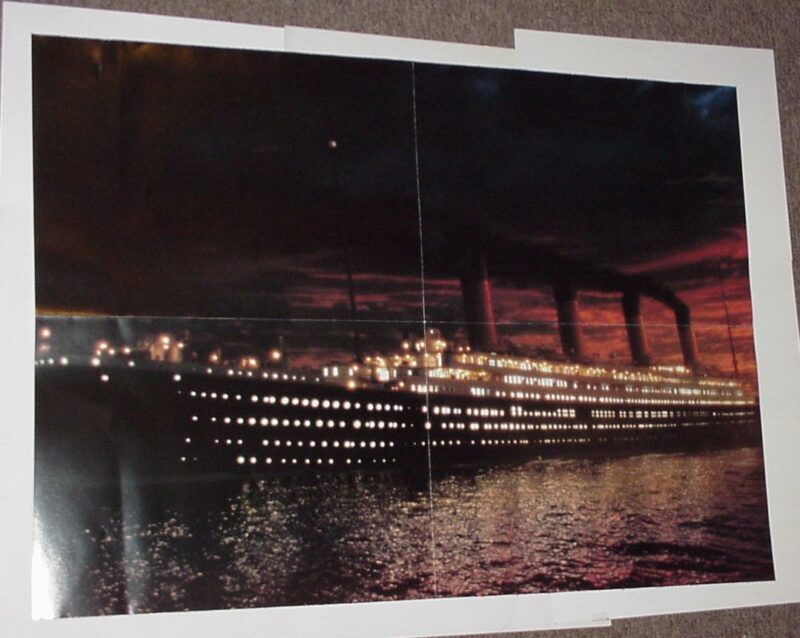Description
James Cameron had a fascination with shipwrecks, and, for him, the RMS Titanic was “the Mount Everest of shipwrecks.” He was almost past the point in his life when he felt he could consider an undersea expedition, but said he still had “a mental restlessness” to live the life he had turned away from when he switched from the sciences to the arts in college. So when an IMAX film was made from footage shot of the wreck itself, he decided to seek Hollywood funding to “pay for an expedition and do the same thing.” It was “not because I particularly wanted to make the movie,” Cameron said. “I wanted to dive to the shipwreck.” Cameron wrote a scriptment for a Titanic film, met with 20th Century Fox executives including Peter Chernin, and pitched it as “Romeo and Juliet on the Titanic”. Cameron stated, “They were like, ‘Oooooohkaaaaaay – a three-hour romantic epic? Sure, that’s just what we want. Is there a little bit of Terminator in that? Any Harrier jets, shoot-outs, or car chases?’ I said, ‘No, no, no. It’s not like that.'” The studio was dubious about the idea’s commercial prospects, but, hoping for a long term relationship with Cameron, they gave him a greenlight. Cameron convinced Fox to promote the film based on the publicity afforded by shooting the Titanic wreck itself, and organized several dives to the site over a period of two years. “My pitch on that had to be a little more detailed,” said Cameron. “So I said, ‘Look, we’ve got to do this whole opening where they’re exploring the Titanic and they find the diamond, so we’re going to have all these shots of the ship.” Cameron stated, “Now, we can either do them with elaborate models and motion control shots and CG and all that, which will cost X amount of money – or we can spend X plus 30 per cent and actually go shoot it at the real wreck.” The crew shot at the real wreck in the Atlantic Ocean eleven times in 1995 and actually spent more time with the ship than its passengers. At that depth, with a water pressure of 6,000 pounds per square inch, “one small flaw in the vessel’s superstructure would mean instant death for all on board.” Not only were the dives high-risk, but adverse conditions prevented Cameron from getting the high quality footage that he wanted. During one dive, one of the submersibles collided with Titanic’s hull, damaging both sub and ship and leaving fragments of the submersible’s propeller shroud scattered around the superstructure. The external bulkhead of Captain Smith’s quarters collapsed, exposing the interior. The area around the entrance to the Grand Staircase was also damaged. Descending to the actual site made both Cameron and crew want “to live up to that level of reality…. But there was another level of reaction coming away from the real wreck, which was that it wasn’t just a story, it wasn’t just a drama,” he said. “It was an event that happened to real people who really died. Working around the wreck for so much time, you get such a strong sense of the profound sadness and injustice of it, and the message of it.” Cameron stated, “You think, ‘There probably aren’t going to be many filmmakers who go to Titanic. There may never be another one – maybe a documentarian.” Due to this, he felt “a great mantle of responsibility to convey the emotional message of it – to do that part of it right, too”
Near mint condition.
Related products
-


Aphrodite IX Poster # 2 by Trevor Hairsine Image
$29.99 Add to cart -


Transformers G.I. Joe Poster Pat Lee GI Optimus Prime Snake Eyes
$39.99 Add to cart -


Fathom Poster # 9 Aspen Shirt Michael Turner Matthews Superman
$39.99 Add to cart -


Iron Man Poster # 5 by Kev Walker Iron Doom Exiles 23 Cover
$29.99 Add to cart



